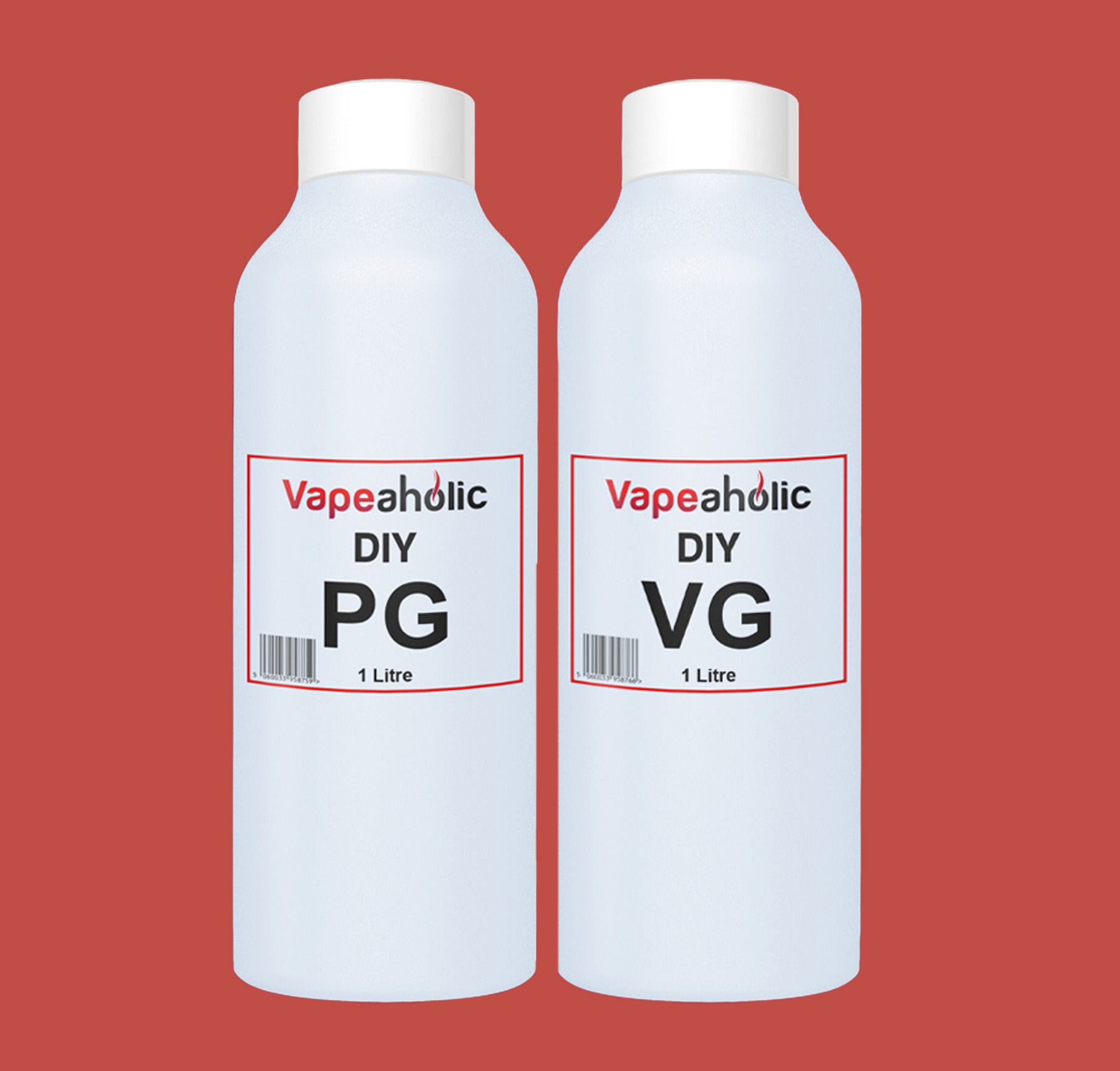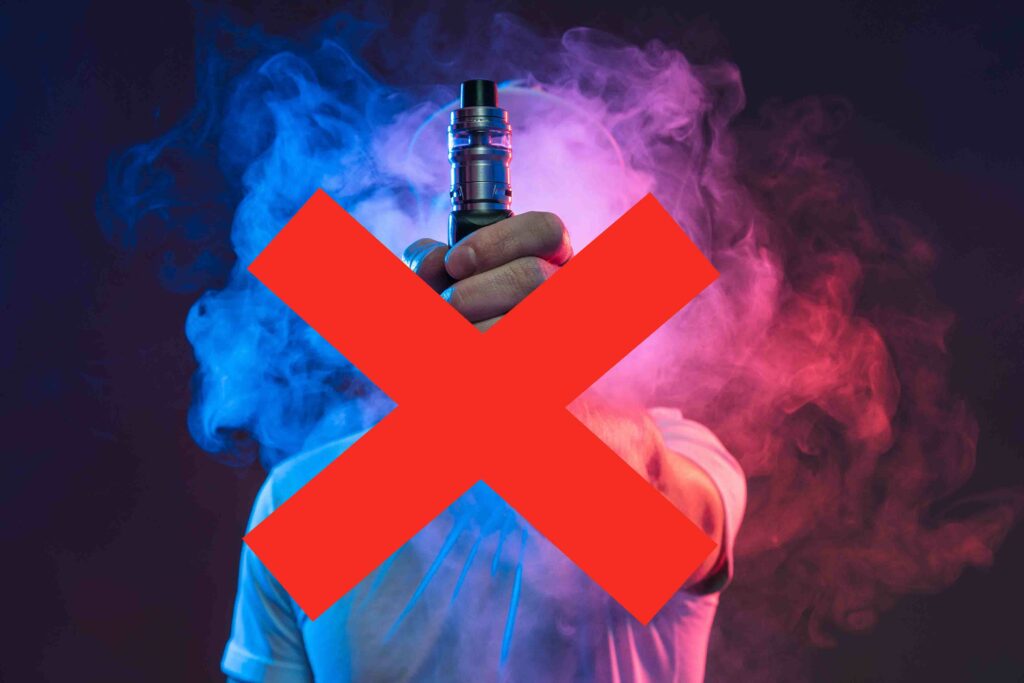In an age where health and wellness are at the forefront of many people’s minds, understanding every aspect of the products we use daily becomes increasingly essential. This is especially true for vaping, a popular alternative to traditional smoking. A common question that often arises in discussions about vaping is, “ Do vapes have calories ?”
This query might seem straightforward, but it touches on broader concerns about vaping ingredients and their potential impact on health. The concept of calories is typically associated with food and drink, as they measure the energy that our bodies use from what we consume. Regarding vaping, calorific content is not just about numbers but about understanding what constituents are inhaled and their effects on the body. For individuals monitoring their calorific intake, whether for weight management or metabolic health reasons, knowing whether inhaling vapour introduces any calorific substance into the body can be crucial.

As we delve deeper into the world of vaping, it’s essential to explore the composition of vaping liquids—commonly known as e-liquids—which consist of ingredients such as propylene glycol (PG), vegetable glycerine (VG), flavourings, and nicotine. These components are central to the vaping experience, influencing everything from the flavour and throat hit to the amount of vapour produced.
In this blog, we will explore these ingredients in detail to answer the burning question about calories in vapes. We’ll examine what science says about the absorption and metabolic effects of substances inhaled through vaping and how this knowledge can guide users in making informed health choices. Join us as we clear the air on the calorific content of vapes and what that means for users concerned with health and wellness.
What’s in Your Vape? Understanding E-Liquid Ingredients
Vaping has become a popular choice for those looking to quit smoking or find an alternative nicotine delivery system. At the heart of any vaping device is the e-liquid, also known as vape juice, which is responsible for the flavour and vapour production users experience. To understand how vaping affects the body, particularly regarding calorific content, it’s essential first to understand what these e-liquids are made of.
E-liquid Composition E-liquids typically consist of the following main ingredients:
- Propylene Glycol (PG) is a colourless, odourless liquid with a faintly sweet taste. It is commonly used as a carrier or solvent in food products, cosmetics, and pharmaceuticals. In e-liquids, PG serves as the base and is prized for its ability to carry flavours. It produces a throat hit that mimics the sensation of smoking, which many users find satisfying.
- Vegetable Glycerine (VG): VG is a thicker, slightly sweet liquid derived from vegetable oils. It is also used in a variety of food and personal care products. In vaping, VG is valued for its ability to produce dense vapour clouds. E-liquids with a higher VG content are particularly popular among users who enjoy doing vape tricks or who prefer a smoother hit that is less harsh on the throat.
- Flavourings: These are added to make the vaping experience more enjoyable and varied. The range of flavours available is vast, from classic tobacco and menthol to fruit, dessert, and beverage flavours. Flavourings used in e-liquids are typically food-grade and are the same as those used in cooking and food manufacturing.
- Nicotine: This is the addictive substance found in traditional cigarettes and other tobacco products. In e-liquids, nicotine is optional and can be adjusted according to the user’s preference, ranging from very high concentrations to zero nicotine. This allows users to manage their nicotine intake or use vaping to quit smoking gradually.
Role of PG and VG Propylene Glycol (PG) and Vegetable Glycerine (VG) are the foundational components of e-liquid. They serve as diluents, which hold the nicotine and flavourings in suspension so that the vape pen can vaporise them. E-liquids can be found in various ratios of PG to VG, affecting everything from flavour intensity and throat hit to the amount and thickness of the vapour produced.
- PG’s Role: Due to its lower viscosity, PG carries flavour more effectively and provides a more significant throat hit, which is appreciated by those who are transitioning from smoking to vaping as it simulates the feeling of tobacco smoke.
- VG’s Role: Due to its higher viscosity, VG generates visibly thicker clouds of vapour, which appeals to users interested in cloud chasing or those who prefer a less intense throat hit and a slightly sweet touch to their vape.
Understanding these ingredients and their roles helps clarify how e-liquids function and what users inhale when vaping. In the next section, we will delve deeper into the calorific content of these components and whether they contribute to any calorific intake when vaped, answering the core question of whether vaping affects dietary calorie consumption.

Calorific Content of E-Liquid Ingredients
When considering the calorific content of e-liquids used in vaping, it’s crucial to understand the essential components—particularly propylene glycol (PG) and vegetable glycerine (VG)—and whether these substances contribute to calories that could impact your daily intake.
Do PG and VG Contain Calories?
- Propylene Glycol (PG): PG is a carbohydrate, but it is not generally consumed in large enough quantities in vaping to contribute meaningful calories. When ingested, PG can be metabolised by the body into energy, but the amount used in vaping is minimal.
- Vegetable Glycerine (VG): VG is also a carbohydrate type containing calories when ingested—about 4 calories per gram, which is comparable to sugar. However, like PG, the amount of VG that could potentially be metabolised from vaping is minimal.
How Are Calories Measured?
Calories are a measure of energy typically used to quantify the energy intake from foods and drinks. Technically, both PG and VG contain calories because they can be metabolised by the body to release energy. However, the traditional concept of calorific content and its measurement is based on ingesting substances, not their inhalation.
Inhalation vs. Ingestion
The process of inhaling substances like PG and VG in vapour form is fundamentally different from ingesting them in food or drink:
- Absorption and Metabolism: When substances are ingested, they are digested and metabolised through the gastrointestinal tract, where they can affect the body’s calorie balance. In contrast, when inhaled substances enter the lungs, they are absorbed into the bloodstream differently. The lungs are designed to exchange gases (like oxygen and carbon dioxide) rather than to metabolise calories from inhaled substances.
- Metabolic Pathways: The metabolic pathways that handle inhaled substances are not typically designed to extract and store energy (calories) as they would with food. Therefore, while PG and VG are technically calorific, the body does not process these in the same way when inhaled as it would when these substances are ingested.
Calorific Impact of Vaping
Considering the mechanisms of inhalation, the calories contained in the PG and VG used in vaping are unlikely to contribute significantly to your daily calorific intake. The trace amounts of these substances in the vapour are minimal, and the capacity of the lungs to absorb and metabolise these into energy is limited.
Thus, while PG and VG do contain calories, vaping introduces such small amounts into the body that its calorific impact is negligible. This distinction is important for users concerned with calorie intake, as it underscores that vaping should not be a significant factor in dietary calorie management. The focus on vaping’s health considerations should rather be directed towards other aspects, such as nicotine content and the effects of inhaling substances on respiratory health.
Do Inhaled Calories Count?
When considering whether inhaled calories from substances like those found in vape juice count towards daily calorific intake, it’s crucial to understand how the body processes these inhaled compounds compared to how it handles ingested nutrients.
Scientific Viewpoints on Metabolism of Inhaled Substances
Whether inhaled calories contribute to energy intake is complex and largely hinges on how the body absorbs and metabolises these substances.

When you inhale substances such as propylene glycol (PG) and vegetable glycerine (VG), they enter the lungs and are absorbed into the bloodstream. However, the respiratory system’s primary function is gas exchange (oxygen in, carbon dioxide out), not nutrient absorption or calorie processing.
Absorption through the Lungs:
- The lungs are efficient at absorbing gases but are not designed to absorb nutrients or metabolise them as the digestive system does. The lungs’ surface area is optimised for gas exchange, not for processing or extracting calories from liquids or aerosols.
- Studies suggest that while some substances can be absorbed from the lungs into the bloodstream, the efficiency and impact of this process are much lower compared to gastrointestinal absorption.
Metabolic Impact of Inhaled Glycerine and Other Components:
- Research on the metabolic impact of inhaling substances like VG and PG is limited. However, existing studies indicate that while these substances can enter the bloodstream, the amount absorbed, and the potential metabolic impact are minimal.
- For instance, glycerine (VG) is a substance that can be metabolised by the body to produce energy when ingested. However, the amount of VG typically present in vaporised form is much lower than what one might consume in food. Furthermore, the pathway and efficiency of metabolising inhaled glycerine versus ingested glycerine differ, and the former’s contribution to calorific intake is likely negligible.
Expert Opinions:
- Experts in respiratory medicine and pharmacology generally agree that the calorific content of substances inhaled through vaping is not significant enough to be considered in the context of daily calorific intake. The consensus is that while these components are technically calorific, how they are administered (through inhalation) does not meaningfully contribute to the body’s calorie count.
- Additionally, the potential for these substances to be utilised by the body for energy when inhaled is minimal due to the inefficiency of the lungs in processing these types of molecules for calorific energy.
Conclusion on Inhaled Calories
The overall scientific consensus is that the body does not metabolise calories from inhaled substances like those found in vape juice in a way that contributes significantly to daily energy intake. This is due to the physiological differences in how the lungs process inhaled substances compared to how the digestive system processes food. Therefore, while VG and PG are technically calorific, their inhaled impact is so minimal that it does not warrant consideration in dietary calorie counting.

Focusing on inhalation as a source of calories is likely unnecessary for those concerned with calorific intake. Instead, attention should be more appropriately directed towards understanding the broader health impacts of vaping, such as potential effects on lung health and nicotine dependency.
Comparing Vaping to Dietary Calorie Intake
Understanding the calorific implications of vaping compared to typical dietary calorie sources can provide more precise insights into whether vaping should be considered a significant factor in overall calorific intake. This comparison can help demystify concerns for individuals who monitor their dietary calories closely.
Calorie Sources in a Typical Diet
In a standard diet, calories come primarily from three macronutrients: carbohydrates, proteins, and fats, each providing a specific amount of energy per gram:
- Carbohydrates and Proteins each provide about 4 calories per gram.
- Fats provide about 9 calories per gram.
- Alcoholic beverages provide about 7 calories per gram.
Everyday dietary items and their calorific contributions include:
- A slice of bread (70 calories),
- An apple (95 calories),
- One egg (approximately 70 calories),
- A 330ml can of soda (about 150 calories).
Calorific Contribution of Vaping – do vapes have calories?
Regarding vaping, as previously discussed, the main components of e-liquid—propylene glycol (PG) and vegetable glycerine (VG)—contain calories when ingested. However, their calorific impact when inhaled is negligible for several reasons:
- Minimal Absorption: The lungs are inefficient at absorbing nutrients for metabolic energy, so even if PG and VG are technically calorific, the actual calorific uptake from vaping is minimal.
- Amount Used: The typical use of PG and VG in vaping delivers a meagre amount of these substances compared to dietary consumption. For instance, vaping might expose a user to less than a gram of PG and VG combined in a day, translating to fewer than 4 calories even if fully absorbed and metabolised, which is different with inhalation.
Comparing Vaping to Common Dietary Items
To put the potential calorific intake from vaping into perspective, consider this comparison:
- The calories potentially inhaled from a day’s worth of vaping (assuming maximal absorption, which doesn’t realistically occur) might equate to less than one-tenth of a small apple or a single bite of a slice of bread. In contrast, consuming a single piece of candy can provide 10 to 20 times more calories than what would be absorbed through vaping.
Why Vaping Should Not Be a Calorific Concern
Given this context, vaping should not be a concern in terms of calorific intake for several reasons:
- Negligible Calorific Value: The number of calories potentially available from vaping is so low that it is statistically insignificant compared to daily dietary intake.
- Inefficiency of Calorific Absorption: The body’s inability to efficiently metabolise inhaled substances for energy further reduces any potential impact of these calories.
In conclusion, when considering calorific intake from vaping, it’s clear that vaping contributes an inconsequential amount to daily calorie totals. Therefore, concerns about vaping and calorific intake should be directed towards other aspects of vaping, such as nicotine content and overall health impacts, rather than its effect on diet.
Health Considerations and Misconceptions
While vaping is often discussed in the context of its potential health impacts, there are many misconceptions about what these impacts entail, particularly regarding calorific intake and respiratory health. Understanding these aspects is crucial for making informed decisions about vaping.

Addressing Health Concerns and Misconceptions
Respiratory Health vs. Nutritional Concerns:
- Respiratory Health: The primary health concerns related to vaping involve the respiratory system. Inhalation of vapour can affect lung function and airway health. Ingredients in vape juice, such as flavouring compounds, can cause irritation or harm when inhaled. For example, some flavouring chemicals are known to be safe for ingestion but may be harmful when vaporised and inhaled. Additionally, the long-term effects of inhaling propylene glycol (PG) and vegetable glycerine (VG) are still being studied, with some research suggesting potential impacts on lung tissue and overall respiratory health.
- Nutritional Concerns: The misconception that vaping contributes significantly to calorific intake is largely unfounded. The amount of PG and VG inhaled during vaping represents a negligible calorific contribution. The focus on vaping’s calorific impact may distract from more relevant health issues, such as the effects of nicotine addiction and respiratory exposure to various compounds.
Common Misconceptions:
- “Vaping is calorie-free and therefore health-neutral” (do vapes have calories?): While vaping may be virtually calorie-free, it is not without health risks. The absence of significant calorific content does not equate to safety, as inhaling non-air substances inherently carries potential respiratory risks.
- “Vaping is a safe alternative to smoking”: While vaping is often marketed as a safer alternative to smoking, “safer” does not mean “safe.” Vaping still exposes users to nicotine (unless using nicotine-free e-liquids) and other chemicals that may have health risks not yet fully understood by the scientific community.
Importance of Understanding Primary Health Considerations
Focusing on the actual health risks associated with vaping, particularly those related to respiratory health, is crucial for several reasons:
- Informed Decision-Making: Users and potential users must understand the risks involved in vaping beyond the simplified comparisons to smoking. Knowing the specific risks related to respiratory health can guide individuals in making more informed choices about whether to vape.
- Public Health Messaging: Clear, accurate public health messaging can help dispel myths and focus attention on substantiated risks and how to mitigate them. This includes discussing the effects of various e-liquid ingredients on lung health and the importance of using regulated products.
- Research and Regulation: Ongoing research into the effects of vaping is essential for developing sound policies and recommendations. As new data becomes available, regulations may need to be adjusted based on the latest scientific findings to protect public health better.
In conclusion, while vaping does not contribute to dietary calorie intake in a meaningful way, its impact on respiratory health remains a significant concern. Dispelling misconceptions and focusing on the inhalation of chemicals as the primary risk factor of vaping helps users and policymakers focus on what truly matters when it comes to the safety and regulation of these products.
In this exploration of vapes’ calorific content (do vapes have calories) and health implications, we’ve clarified several key points that are vital for understanding the broader context of vaping’s impact on health. Let’s summarise the insights and reinforce the importance of focusing on accurate health information.
Summary of Key Points
- Minimal Calorific Impact: Do vapes have calories? The components of vape juice, namely propylene glycol (PG) and vegetable glycerine (VG), contain calories when ingested. However, when these substances are inhaled through vaping, their calorific contribution is negligible. The mechanics of inhalation versus ingestion mean that the calorific content of vaping is essentially non-existent in terms of dietary impact.
- Focus on Respiratory Health: The primary health concerns related to vaping should focus on respiratory rather than nutritional impacts. Inhalation of vape constituents, including nicotine, flavourings, PG, and VG, poses potential risks to lung and airway health, which are more pertinent and pressing than calorific intake.
- Misconceptions around Vaping: It is crucial to correct common misconceptions, such as vaping being a “safe” alternative to smoking or being “health-neutral” because it is supposedly calorie-free. While vaping may reduce some risks associated with traditional smoking, it introduces its own set of risks, especially concerning respiratory health.
Reaffirming the Importance of Accurate Health Information
As we navigate the evolving landscape of vaping and its popularity, it is imperative to rely on verified health information. This approach ensures that the public and policymakers are well-informed about the genuine risks and can make educated decisions or regulations based on scientific evidence rather than anecdotal experiences or marketing materials.
Encouraging Comprehensive Health Information for Lifestyle Choices
For individuals considering vaping, either as a cessation tool for smoking or as an alternative to nicotine delivery, comprehensively understanding the health information is crucial. Consider the following steps:
- Consult Healthcare Providers: Engage with health professionals to discuss personal health considerations and the potential impacts of vaping.
- Stay Updated with Research: As research on vaping continues to develop, staying informed with the latest studies and findings will help ensure that your choices are based on current knowledge.
- Evaluate Personal Health Goals: Align your use of vaping products with your overall health and wellness goals, considering all potential risks and benefits.
In conclusion, while vaping’s calorific content is minimal and not a direct concern for dietary health, the respiratory implications are significant. Users should focus more on these aspects when evaluating the safety and suitability of vaping. By promoting a well-rounded understanding and addressing the risks involved, we can better ensure that vaping is approached with caution and awareness within public health.


